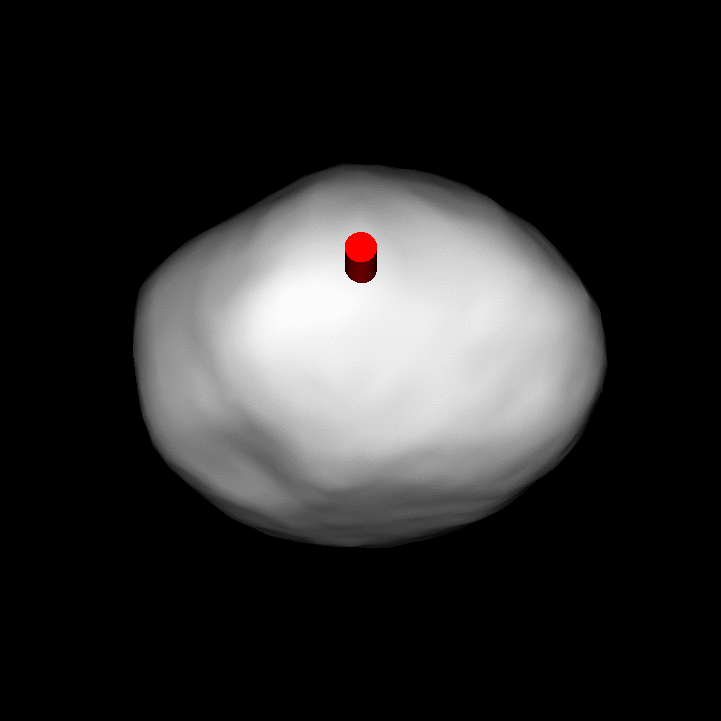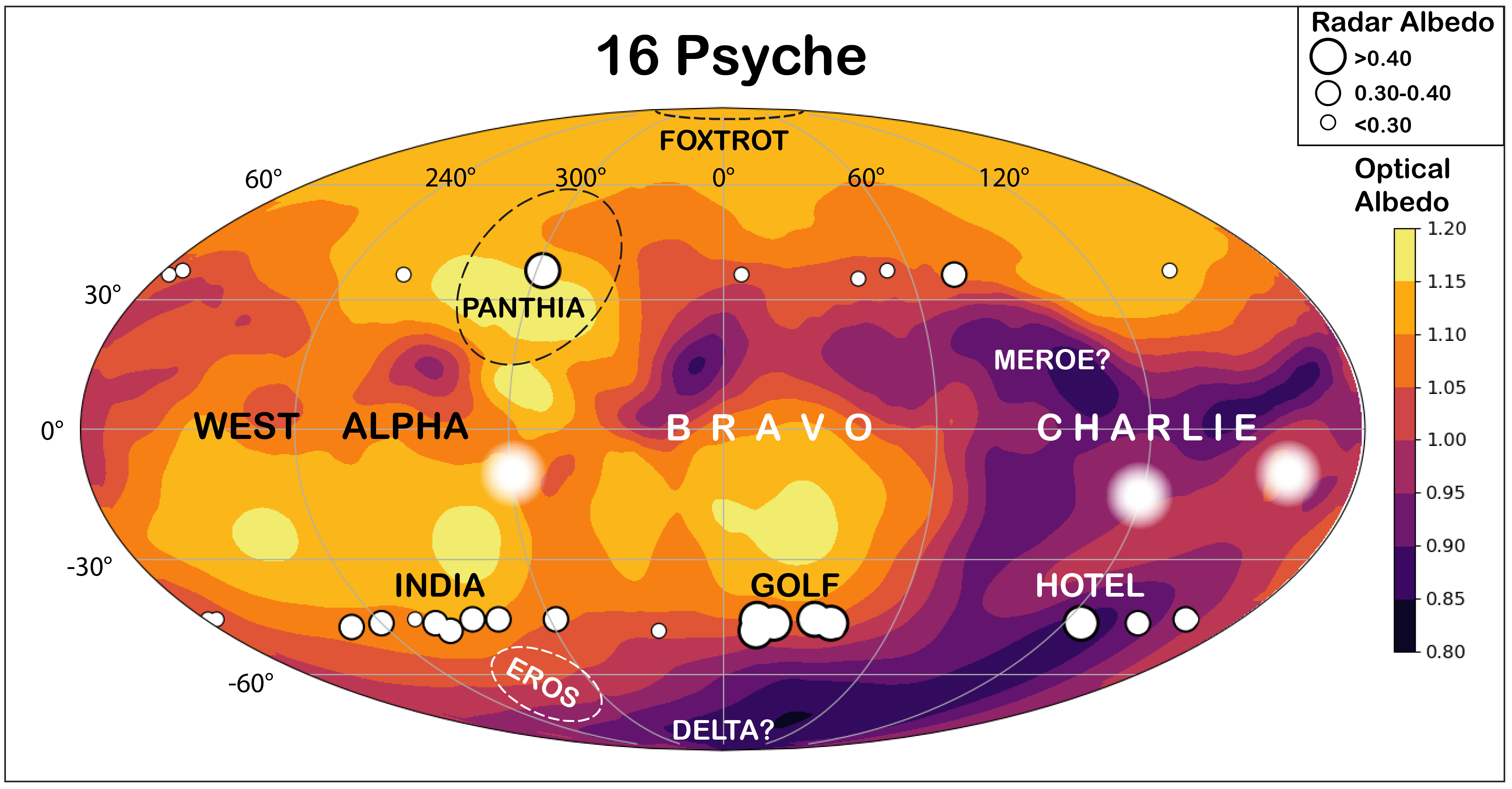Asteroid (16) Psyche - A Ferrovolcanic World?
A Little Background...
Asteroid (16) Psyche was first discovered in 1852 and is now known to be the largest M-class asteroid in the solar system. M-class asteroids are thought to be dominated by metal (chiefly iron and nickel, Fe/Ni), but only about 40% of those surveyed by radar appear to be "radar-bright", indicative of a high metal content (see my work on XME-asteroids). Psyche is one of those that radar suggests is dominated by metal.
Until 2017, 216 Kleopatra was the only M-class asteroid with a radar-derived shape model. But in 2015, we obtained sufficient delay-Doppler imaging to derive the first shape model of 16 Psyche (Shepard et al. 2017)
Our work took on new urgency when NASA chose a Discovery Mission to Psyche! It is scheduled for launch in Aug 2022 with an arrival in Jan 2026. Called Psyche, it will be the first mission to explore a radar-bright M-class asteroid. (21 Lutetia was observed by the Rosetta mission, but it is not radar-bright.)
In 2017, we obtained new CW observations of the northern hemisphere of Psyche. In 2019, de Kleer et al. (2021) obtained the first plane-of-sky observations of Psyche using Atacama Large Millimeter Array (ALMA). Spectacular new AO images of Psyche were published by Viikinkoski et al. (2018) and Ferrais et al. (2020), and dozens of amateur and professional astronomers observed a 2019 stellar occultation by Psyche that tightly constrained its size. We combined all of these to refine our previous shape model, shown below and in Shepard et al. (2021) PSJ
The left animation is centered at 20N, the right at 20S. Several large depressions are evident. The more subtle features may be real, but may also be artifacts of the modeling process.


An optical albedo map of Psyche was first published by Viikinkoski et al. (2018) and refined by Ferrais et al. (2020). Onto this map, we overlaid all our previous radar albedo measurements along with a variety of surface features reported by others and seen in our shape model. The brightest radar albedos appear to correlate with the brightest optical albedos on the surface. We believe this correlation supports the idea that Psyche is a differentiated object with a metal-enriched silicate regolith and localized regions of very high metal content. The most credible model for this interpretation is that Psyche is a world that exhibits "ferrovolcanism", or volcanoes that erupt molten iron, as proposed by Johnson et al. (2020).
An optical albedo map with features and radar albedo measurements. See our paper for details. The optical albedo map has been stretched; the brightest features are ~20% brigher than the mean (pv~0.16). Dashed circles are craters and closed circles are the sub-radar centers of radar observations; larger circles indicate higher radar albedos as indicated in the legend. Three white "spots" are also shown - these are the locations of high optical albedo reported by Ferrais et al. (2020) but not indicated on their optical albedo map. Names correspond to features reported by Viikinkoski et al. (2018) and Ferrais et al. (2020), and labels using the ICAO phonetic alphabet (e.g. Alpha, Hotel) are topographical or radar albedo features observed in our model. If our hypothesis about ferrovolcanism is correct, we predict the optically brighter regions to be the sites of ferrovolcanic activity.

Coverage by Sky and Telescope


